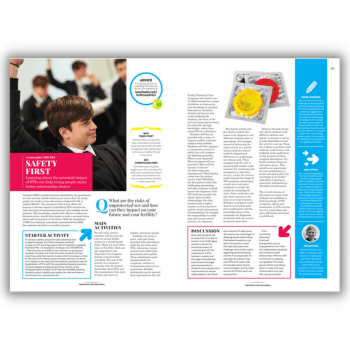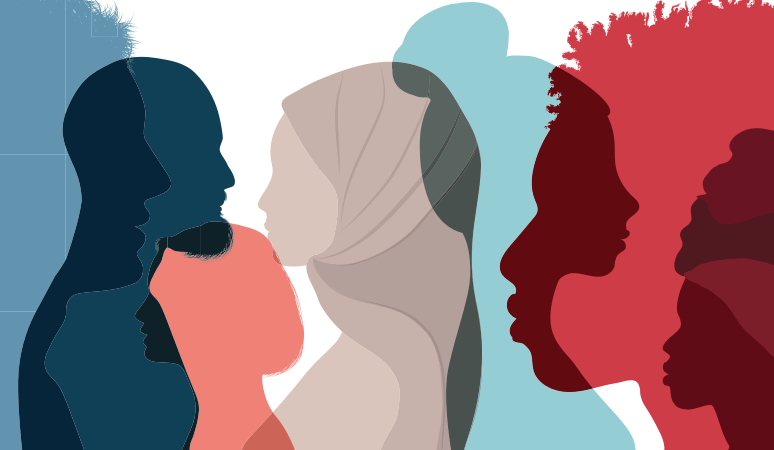Consent, misogyny and power – How schools can neutralise the ‘Everyone’s Invited’ culture

The spread of sexual abuse and harassment within schools demands a response – so let’s change the systems that allow such harms to thrive, says Barry Mansfield

During summer 2021, in the wake of the ‘Everyone’s Invited’ revelations, Ofsted launched an inquiry into sexual abuse in schools that produced some shocking, if perhaps not unexpected findings.
The resulting report attempted to highlight long-standing problems, while providing leaders and safeguarding teams with guidance on how they might tackle related issues in their schools. Its proposed remedies could be categorised under three areas – training, robust behavioural standards and improved systems.
What it didn’t do, however, was identify causes or acknowledge wider structural problems – at least, not intentionally.
Teaching consent
For example, the report asks schools to ‘Reinforce a culture where sexual harassment and online sexual abuse are not tolerated’ – which seems to assume that there are competing cultures, some of which might have greater tolerance for abuse. It also states that a ‘behavioural approach, including sanctions when appropriate’ is the way to manage this. This raises a range of unanswered, and complex, questions.
Abuse is fundamentally the exercise of power by one individual or group over another. At its simplest, power is expressed through action and language, which in turn shapes culture. ‘Entitlement’ is simply the unspoken, or unacknowledged expectation that one has power – that one’s words or actions need no justification or reflection, because this is the accepted norm.
None of this is revelatory. But if there’s no recognition that teaching consent amounts to confronting power, and all its associated cultural norms, then the guidance starts to seem rather reactive and lightweight.
According to the government’s own RSE and Health Education guidelines, schools are now tasked with teaching consent, including ‘The age of consent, what consent is and is not, the definitions and recognition of rape, sexual assault and harassment.’ Schools are also required to teach ‘How people can actively communicate and recognise consent from others, including sexual consent, and how and when consent can be withdrawn (in all contexts, including online).’
This is all purposeful and entirely appropriate, of course – but the evidence we have tells us that incidents of sexual assault are chronically under-reported; that withholding consent is not a protection in itself, and that violence against women and girls in particular remains commonplace – consider the recent cases involving Sarah Everard and Sabina Nessa, and Jess Phillips’ annual reading-out in Parliament of the names of women murdered that year by men.
Reducing the footprint
To begin to examine the overwhelming evidence of widespread sexual harassment in schools, much of it gendered, one has to acknowledge that the male exercise of power – in positions of authority in the workplace; in inequity in pay structures; in the data that is used in the design of everyday objects; in prioritising health and wellbeing; in controlling access to education in many parts of the world; and in so many other areas of women’s lives – is not going to be undone in a couple of PSHEE lessons. However, we can look at our own school house and ensure that we have thought about our culture, and have built that intentionally to diversify power and reduce the footprint of entitlement.
We can, however, get our own houses in order by considering the culture of our school, and intentionally developing it so that power is diversified, and the footprint of entitlement reduced.
Every student arrives at school from a different cultural space. They bring with them a history and context that’s largely unknown to their teachers. Yet every young person – and girls in particular – should find themselves in a place where they’re taught that adults listen; that as students, they possess some degree of agency, they can make a difference and are secure.
They should learn that the possession of power needn’t be tied to caveats or threats. Instead, they should see power modelled equitably, wielded with moral authority, and see that action can and should be invested in women, just as much as men.
This isn’t just about creating spaces that give power to young women. It’s about creating spaces that simultaneously provide opportunities for young men to explore their entitlement, and understand that their choices around consent aren’t particular moments in time, but rather the culmination of a culture that can blind them to their own personal impact on others’ lives.
The moral responsibility of school leaders is, therefore, not just to be arbiters and enforcers, but also to be facilitators, risk-takers and explorers; to be willing to create a culture where power is distributed, and sexual violence and misogyny have no place to grow.
Barry Mansfield is the Director of Halcyon London International School; for more information, visit halcyonschool.com








